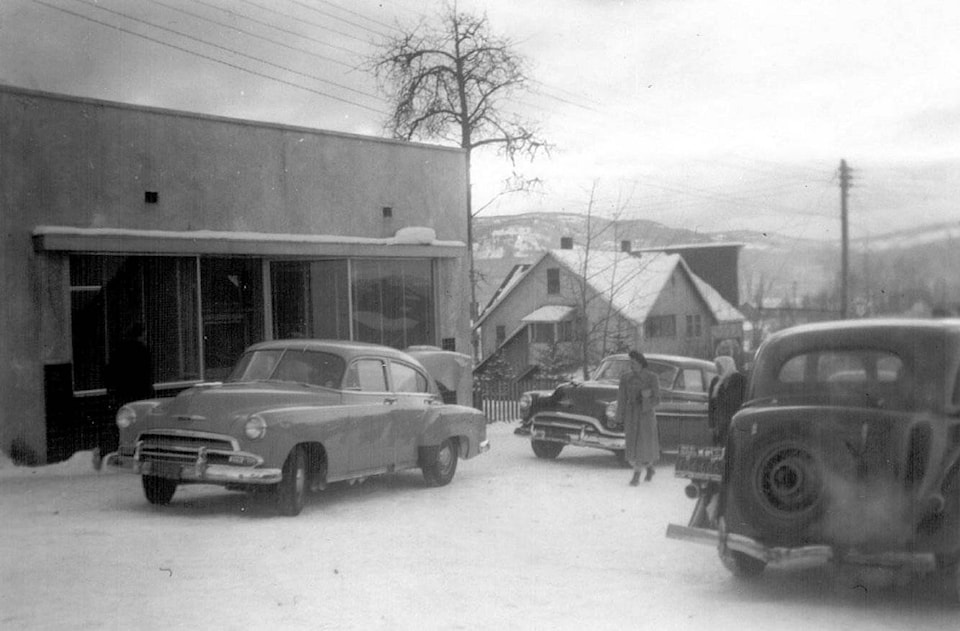In October 1917, only a few years after Trygarn Pelham Lyster (Barney) Mulvany set up tents on the present site of Burns Lake, British Columbia’s legislature banned the sale and recreational use of alcohol.
Prohibition was supposed to curb crime and other social ills, but in many cases had the opposite effect. Public demand for liquor remained high, and while the punishment for smuggling was considerable, there were always those willing to risk it.
Criminals found inventive ways to get liquor into the hands (and stomachs) of those who wanted it. In the United States (where Prohibition lasted into the 1930s), smugglers once used hollow torpedoes to carry booze across the Detroit River. The torpedoes were filled with bottles of alcohol, slid into the river, and sent across on a submerged cable. Officials traced the cable back to a boathouse on the Canadian side of the border.
Another smuggler was arrested by customs officials after he dropped a basket of eggs. The mess smelled suspicious; border security discovered that the culprit had poked a small hole in each egg, used a syringe to drain the contents, and refilled the empty shells with alcohol before resealing them.
Here in BC, BC Provincial Police seized a load of pork at Tete Jaune in 1919. Upon closer examination, the carcasses were found to contain bottles of bootleg whiskey.
Prohibition put a crimp on alcohol consumption in Burns Lake, but didn’t stop it. While local hotels (which were subject to frequent raids by the ‘dry squad’) generally toed the legislated line, it is rumoured that illicit liquor was readily available in ‘The Bucket of Blood,’ a cabin built by Mulvany that later became a ‘blind pig’ and gambling den.
Several enterprising locals did their best to keep up with public demand during Burns Lake’s ‘dry’ years. One resident was caught in the act of selling liquor, and a representative of the province arrived in town to handle the matter. The visiting official tried the case sitting next to some removable steps that supposedly concealed the largest cache of illegal booze in the district.
Even a few government officials got into the act. For years, old-timers in the Lakes District told the story of a local magistrate who once tried a bootlegger. The magistrate asked the man how much he charged for his product. The accused replied: “The same you go, Your Honor –five dollars.”
And then there was the case of Walter C. Findlay. Findlay was secretary of the People’s Prohibition Movement in BC, an organization vociferously opposed to the consumption of alcohol. When it came time to name a prohibition commissioner, the provincial government chose Findlay based on his track record.
He didn’t have the job for long.
In his official capacity, Findlay was responsible for a government liquor store and warehouse that sold alcohol for “medicinal” purposes. Sanctioned shipments were processed through the government facility, but something went amiss less than a year into Findlay’s tenure.
In late 1918, the provincial treasury received a cheque for $42 from the Canadian Pacific Railway. The railway claimed it had overcharged the province for delivery of 700 cases of Gooderham and Worts whiskey.
Treasury officials had no record of the shipment, and started investigating. They traced the whiskey, which came from eastern Canada and was allegedly headed overseas, to a private warehouse leased privately by the prohibition commissioner. Arrested at the Blaine border crossing while attempting to flee the country, Findlay was later convicted of stealing government alcohol. He served two years in prison, then moved to the US.
Tales of corruption fueled public opposition to Prohibition. In October 1920, BC held a referendum on the question of whether the sale and consumption of liquor should be government regulated. This option proved more palatable to most British Columbians, who voted by a margin of two-to-one in favour of it.
The Government Liquor Act became law early in 1921, and by late June, alcoholic beverages were available for purchase in 17 government-run liquor stores across the province.
The Village of Burns Lake held a referendum on the matter on January 26, 1928. The subsequent count by Returning Officer Robert Gerow revealed that there were 57 votes in favour of a government liquor store, 12 against, and one spoiled ballot.
Burns Lake’s first government liquor store opened in June 1928 with M.H. Laidlaw, a provincial government employee, at the helm. When Laidlaw left in December to resume his duties as inspector of liquor stores, Charles Hutchinson replaced him and introduced himself to the community by playing oboe at the annual Christmas dance – where, we are told, a considerable amount of alcohol was consumed.
© 2019 Michael Riis-Christianson and the Lakes District Museum Society
